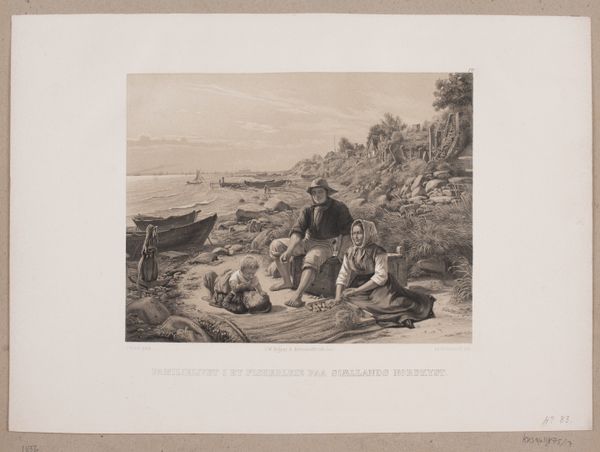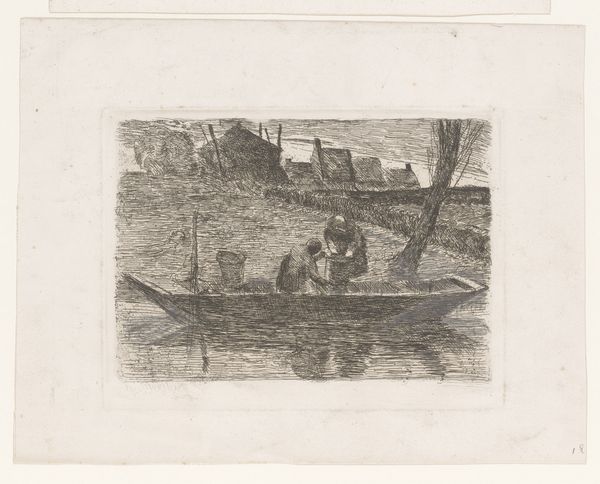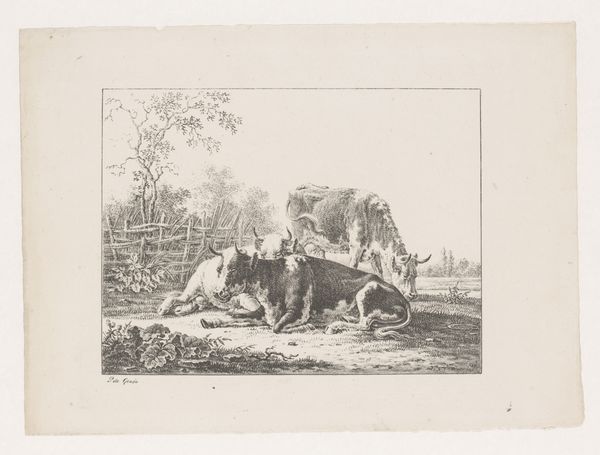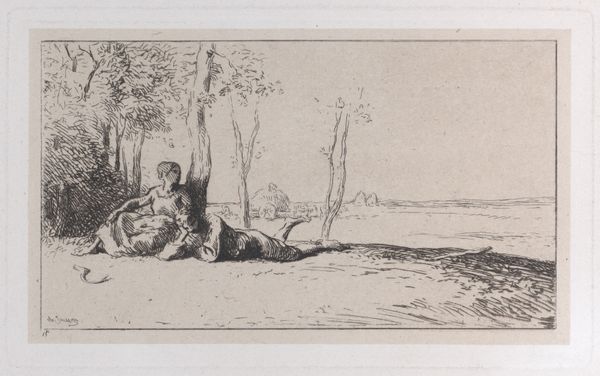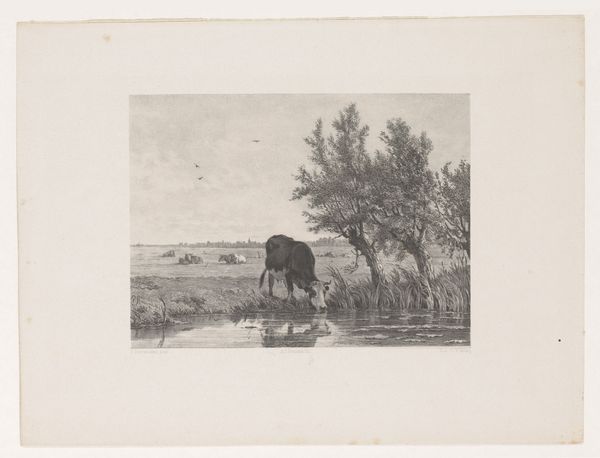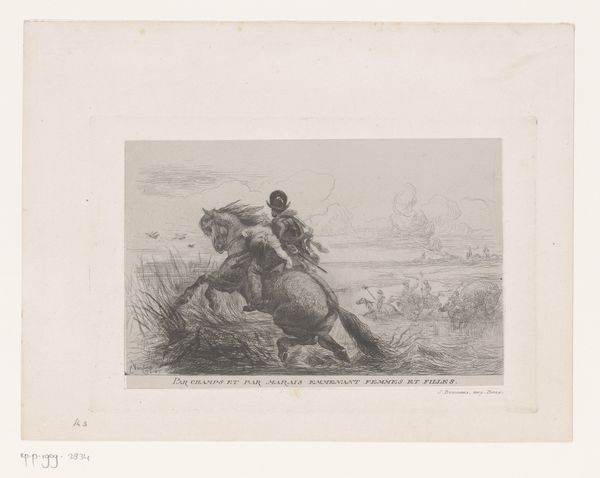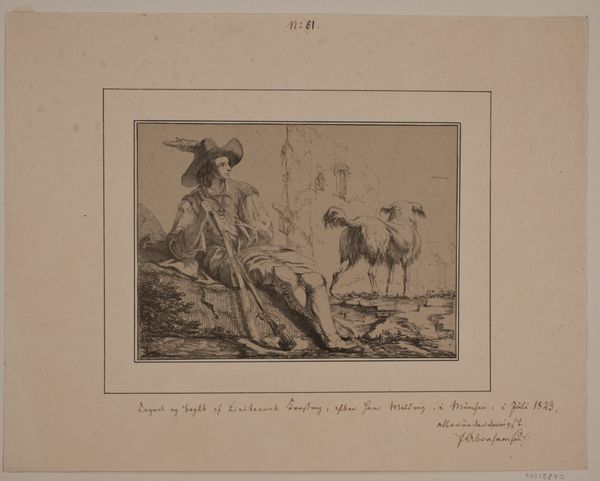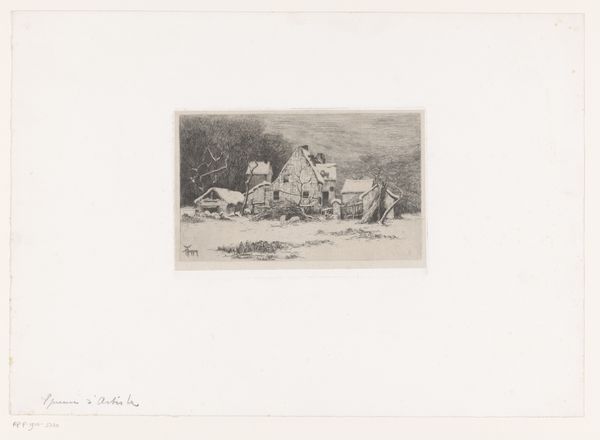
En fisker ordner sine snører omgivet af en flok ænder 1910
0:00
0:00
drawing, print, etching, engraving
#
drawing
# print
#
etching
#
landscape
#
figuration
#
genre-painting
#
engraving
#
realism
Dimensions: 70 mm (height) x 100 mm (width) (billedmaal)
Curator: Here we have "A Fisherman Arranging His Lines Surrounded by a Flock of Ducks," created by Hans Peter Hansen around 1910. The medium is etching, a form of printmaking that allows for fine detail, wouldn’t you agree? Editor: Yes, absolutely. The detail is quite charming. Immediately, the feeling that I get from this print is one of gentle calm; a quiet coastal scene. The man seems untroubled by the squawking flock around him. Curator: This realism really does capture the spirit of the period and the man's position within it. Considering the broader history of maritime communities and their reliance on the sea, this resonates as an exploration of labor and environmental interconnectedness. He’s not divorced from nature; the fisherman is deeply immersed in it. Editor: You are right, and thinking about the genre, one must wonder how such a depiction, that is so bucolic, relates to broader conversations around labor at the time. In early 20th century Denmark, wouldn’t the labor conditions have been quite arduous? The serene nature of the image might serve as a counterpoint to that harsh reality. Curator: It does beg the question of how this artwork engages with ideas of labor exploitation. However, realism, as a movement, often focused on the lives of everyday people; could it be Hansen's intention to highlight the dignity of the working class? Even within difficult circumstances, people develop routines and familiarity with the natural world. Editor: That's a valid point. The composition further emphasizes the relationship between the man and the flock. Are the ducks dependent on the man, or is he perhaps relying on them to keep him company? The water even appears as a smooth plane in the distance that further enhances the harmony of the image, blurring human existence with natural processes. Curator: It would also be important to consider what commentary Hansen’s work provided, as fishing itself played a significant role in gender dynamics during the period. Hansen may have subtly engaged in dialogues about class and gendered labour that continue to resonate today. Editor: Reflecting on our conversation, this modest-sized etching certainly holds surprising complexity. I had not considered it engaging with the discussions of gender dynamics! Curator: It demonstrates how artworks from the past serve as poignant reminders of lived realities and socio-political concerns. It invites us to rethink how we perceive labor, humanity, and our environment.
Comments
No comments
Be the first to comment and join the conversation on the ultimate creative platform.
